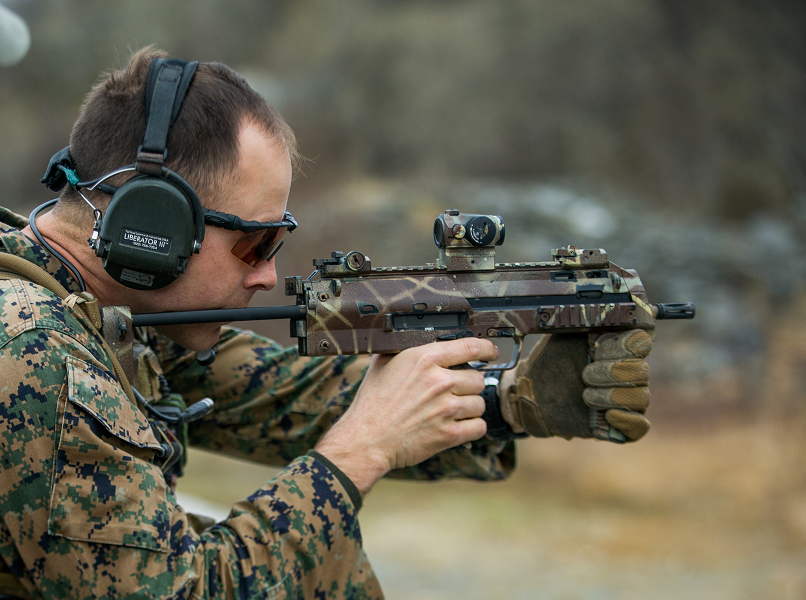This post is also available in:
 עברית (Hebrew)
עברית (Hebrew)
There has always been a consistent effort to ease the burden a soldier has to carry into the battlefield. From lighter vests to unmanned ground vehicles carrying gear. However now, researchers from the United States Army are working to develop a smaller personal rifle that weighs less than the standard M4 and uses lighter ammunition.
Last March, the Army Research Laboratory tested an experimental weapon prototype with a 10 inch long barrel, about half the barrel length of a full sized M16. The ammunition fired uses only about a gram of gunpowder per bullet, about two-thirds the amount of gunpowder the standard 5.56 bullet uses.
During testing the prototype weapon gave off a muzzle velocity of over 2,900 feet per second. Slightly slower than a standard M4’s muzzle velocity, however the prototype weapon is significantly shorter and lighter.
Shortening a weapon while still maintaining its stopping power is no simple task. A weapon firing high velocity rounds has to be strong enough to safetly contain the pressure released when the gunpowder in the bullet detonates. If the weapon isn’t strong enough to contain the pressure it could break, potentially injuring the shooter.
The prototype weapon uses a patented breach design that screws securely into the weapon, helping distribute the pressure generated from firing bullets. The new design allows the weapon to tolerate higher pressures while not adding too much weight.
High pressure in a firearm can also cause the weapon to jam due to the metal cartridge cases expanding from the heat. The cartridges could get stuck in the breech and jam the weapon. The solution towards this issue is another innovative patented design. The cartridges sport tapered wedges on their sides, so that when a bullet is fired the cartridge is yanked out the weapon backwards by their base.
Finally, the prototype utilizes a barrel that gets more and more narrow as it reaches the end. The tighter space near the end of the barrel gives the bullet an extra thrust due to the pressure building up in the narrower part of the barrel, this means that the pressure is more distributed throughout the barrel.
The final result is a compact weapon, that weighs less, takes up less space, and packs just as much of a punch as the standardized weapons used in combat today.
This unique weapon design is scalable, meaning it could work on larger and smaller firearms. Thedrive.com mentions that another prototype gun with a 24 inch barrel and similar components managed to create muzzle velocities between 4,600 and 5,750 feet per second.
It is not yet clear when the prototype weapons will become standard in the field. So far the research is more about accelerating technology. Eventually though, soldiers will most likely find themselves sporting stronger, smaller, and lighter weapons on the battlefield.


























